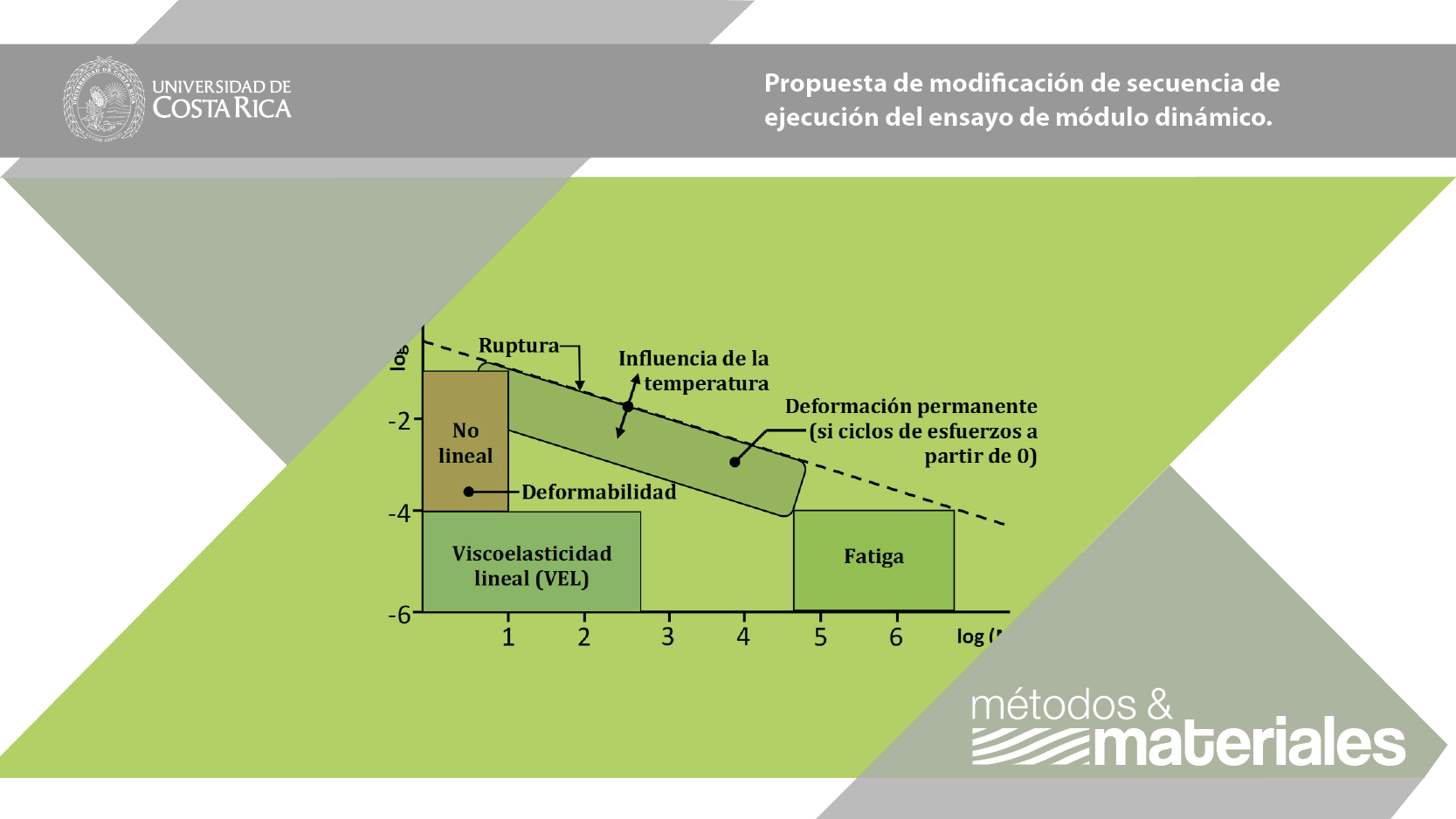Abstract
In recent years, different test methods and procedures have been developed to evaluate the rheological properties of asphalt materials, some of which have been incorporated in design methodologies and standards in Mexico. However, the correct determination of mechanical properties of asphalt mix involves complex evaluations and the need for other areas of knowledge as metrology, instrumentation and data processing, combined with a clear understanding of the mechanical behavior of a viscoelastic material. This is the case for the dynamic modulus test, which aims to evaluate the linear viscoelastic properties of the asphalt mixture by determining two mechanical parameters, the dynamic or complex module (|E*|) and the phase angle (δ).
The present article illustrates the evaluation of the viscoelastic properties of an asphalt mixture and the analysis of the data obtained in tests. Indicating some of the general errors in the conduction of the test and to justify the test sequence proposed by the IMT regarding the AASHTO T 342 Standard, which does not alter the identification of the linear viscoelastic properties of the asphalt mixture.
References
Bonaquist R. (2008), Refining the Simple Performance Tester to Use in Routine Practice. NCHRP Report 614.
Bonnot J. (1983), Généralités sur essais mécaniques pratiques de formulation et de contrôles des enrobés bitumineux, RILEM, p. 133-170, Belgrado, 12-16 septiembre.
Carter A., Perraton D. (2002), La mesure du module complexe des enrobés bitumineux, 2e Conferencia especializada en ingenieria de materiales, Montréal, Québec.
Delgado H., Arnaud L. (2011), Investigation of the fatigue properties of asphalt mixtures reinforced with natural fibers. 5th International conference: bituminous mixtures and pavements, Tesalónica.
Delgado H. (s.f), Lo complejo del módulo complejo: aspectos experimentales (segunda parte), Revista asfáltica. No. 33 p. 5-10, México, Enero-Marzo 2013.
Delgado H. (s.f), Lo complejo del módulo complejo: principio de equivalencia Tiempo-Temperatura (tercera parte), Revista asfáltica. No. 34 p. 42-46, México, Abril-Junio 2013.
Di Benedetto H. (1990), Nouvelle approche du comportement des enrobés bitumineux : résultats expérimentaux et formulation rhéologique. RILEM. Budapest, pp 387-401.
Di Benedetto H., Corte J.-F. (2004), « Matériaux routiers bitumineux 2 : constitution et propriétés thermomécaniques des mélanges », Hermes, Lavoisier.
Olard F (2003). Comportement thermomécanique des enrobés bitumineux à basses températures. Relations entre les propriétés du liant et de l’enrobé. Tesis: Instituto Nacional de Ciencias Aplicadas de Lyon.
Pellinen T., Crockford B. (2003), Comparison of analysis Techniques to Obtain Modulus and Phase Angle from Sinusoidal Test Data. In: RILEM. Ensayos de desempeño y evaluación de mezclas asfálticas, Zurich, pp 301-307.
Witczak M. W., Bari J. (2004), Development of Master Curve (E*) Database for Lime Modified Asphaltic Mixtures. Arizona State University Research Project, Tempe, AZ 85287-5306.






